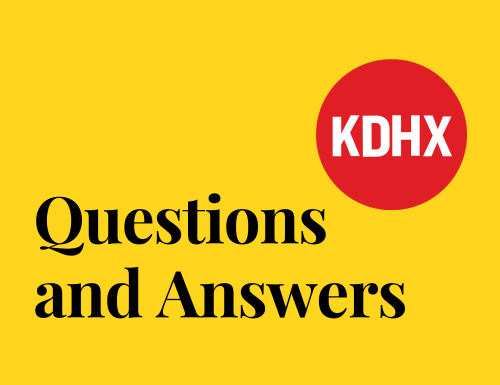
Symphony Preview: On second thoughts
By Chuck Lavazzi
Written By Chuck Lavazzi
[Preview the music with my Spotify playlist.]
With Powell Symphony Hall closed for the next two years for extensive renovation and expansion, the St. Louis Symphony Orchestra is presenting its new season in two different venues: the 3100 seat Stifel Theatre (where the season opener was held) and the more intimate 1600 seat Anheuser-Busch Performance Hall at the Touhill Center on the UMSL campus.
 |
| Beethoven in 1803 Painted by Christian Horneman |
This coming weekend (September 29 and 30), Stéphane Denève and the band make their first season appearance at the Touhill. In keeping with the smaller stage, it’s a program that demands smaller orchestral forces than the two Richard Strauss Big Band Extravaganzas last weekend.
The concert opens with the overture Ludwig van Beethoven (1770–1827) wrote for the 1804 play “Coriolan” by the composer’s friend Heinrich von Collin. Like Shakespeare’s more familiar “Coriolanus,” it’s based on the story of the Roman general Caius Marcius Coriolanus, who led a rebellion against the decaying Roman Empire in the 5th century CE. Persuaded at the last to refrain from sacking Rome, he was treacherously killed by his allies.
Reflecting the arc of the play, Beethoven’s overture begins in heroic defiance and ends somber resignation. It’s not a curtain raiser so much as an independent tone poem which, as Brockway and Weinstock write in Men of Music, “crystalizes the essence of the drama as Beethoven felt it.” Although a popular piece, it hasn’t been performed by the SLSO since 2008 and never under Maestro Denève’s baton.
Hold your applause after the overture because the band will proceed directly (attacca) to the next item, “subito con forza” by contemporary Korean composer Unsuk Chin (b. 1961). The reason why the two works are linked will be apparent the moment you hear it, and I am disinclined to spoil that moment for you here. If you must have your spoilers, though, there’s an excellent performance by the Oslo Philharmonic under Klaus Mäkelä (complete with synchronized score) on YouTube. In any case, be prepared for Beethovenian “Easter eggs.”
Up next is Beethoven’s Piano Concerto No. 1 in C major, Op. 15. It's officially his Piano Concerto No. 1 because it was the first of his five concerti to be published, but it was actually his second essay in the form, dating from 1797—two years after the Piano Concerto No. 2 in B-flat major. It is, as a result, more richly orchestrated, more sophisticated, and a bit less derivative of Mozart and Haydn than the B-flat major concerto. I think Haydn’s influence is most apparent in the allegro scherzando finale, both in the jollity of the music and in the fact that it’s a rondo—a favorite form of the composer. The noble opening theme of the first movement, though, strikes me as pure Beethoven.
The concerto was last heard here in January 2022, with Denève conducting and Shai Wasner at the piano. This time around the soloist will be the American pianist Jonathan Biss (b. 1980), whose recording of the complete Beethoven sonatas is a “must listen” for anyone seriously interested in the instrument to which the composer consigned his most profound thoughts. Biss is also a fine and exceptionally witty writer, as a stroll through his web site will reveal.
The program concludes with the Symphony No. 4 in D minor, Op. 120 by Robert Schumann (1810–1856). The composer started the first movement in May of 1841 (only two months after the successful premiere of his Symphony No. 1) and, with time out for holidays and the birth of his daughter Marie, wrote the last note that October. Its four movements are played without pause “as if written in one continuous arc” (Judith Chernaik, Schumann: The Faces and the Masks) and share enough common thematic material so that, to cite the SLSOs program notes, it “approaches the novel cyclical construction proposed by pianist and composer Franz Liszt.” Chernaik describes it as “wonderfully linked together, full of poetry, haunting in its melodies, sure in its handling of each section of the orchestra…it was another masterpiece, as Schumann must have known.”
 |
| Schumann in 1850 en.wikipedia.org |
Audiences, alas, failed to appreciate any of this when the symphony was first performed by the Leipzig Gewandhaus Orchestra under the baton of concertmaster Ferdinand David on December 6th 1841. The response was unenthusiastic and largely the result of events beyond the composer’s control. Audiences heard the work only after the intermission of a long concert, the first half of which consisted of seven (!) works including Schumann’s “Overture, Scherzo and Finale,” Mendelssohn’s Capriccio for Piano and Orchestra (with Clara Schumann as soloist), a series of works for piano solo (Clara) and duo (Clara and celebrity guest Franz Liszt), and Liszt’s setting for male chorus of the patriotic “Rhineland.”
Not surprisingly, the audience, the musicians, and the critics were a bit worn down by the time Schumann’s symphony was finally played. “They failed completely to appreciate the work’s originality and power,” writes Chernaik. The tepid response made it hard for the composer to find a publisher for the work and he shelved it until 1851 during his tenure as Music Director at Düsseldorf. “I totally reorchestrated the symphony,” he wrote in a letter to the Dutch composer Johannes Verhulst, “and, of course, made it better and more effective than it was before.” It was this revision, first conducted by Schumann himself in 1853, that enjoyed the success the 1841 original failed to achieve. It’s now the one that everyone performs, including the SLSO this weekend.
Ah, but is it in fact “more effective than it was before”? When Schumann’s friend Brahms prepared an edition of the composer’s collected works in 1886, he had on hand an autograph of the original version (courtesy of Clara). Upon comparing them, he decided that he preferred the original. Clara strongly disagreed and the original remained unpublished until 2003. Fortunately, John Axelrod and the Bucharest Symphony courageously issued a recording of both versions on the Orchid label just a few days ago. You can listen to both of them on my Spotify playlist and decide for yourself.
The Essentials: Stéphane Denève conducts the SLSO and piano soloist Jonathan Biss in a program consisting of Beethoven’s Coriolan Overture and Piano Concerto No. 1 along with Unsuk Chin’s “subito con forza” and Schumann’s Symphony No. 4. Performances are Friday at 10:30 am and Saturday at 7:30 pm, September 29 and 30 at the Touhill Performing Arts Center on the UMSL campus. The Saturday evening performance will be broadcast live on St. Louis Public Radio and Classic 107.3. For more information, visit the SLSO web site.



